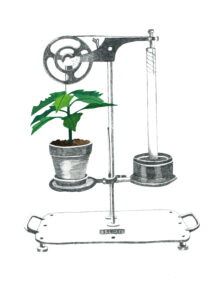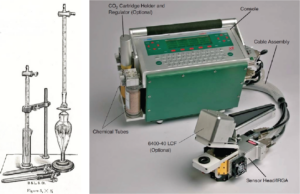 William F. Ganong, Researcher and Educator
William F. Ganong, Researcher and Educator
By Lucy Gould (’24J)
Research and teaching have long gone hand-in-hand at Smith College. Consider William F. Ganong, Smith’s first head of the Botany Department and Director of the Botanic Garden until his retirement in the early 1930s. As a plant physiologist, Ganong sought to understand how plants conduct photosynthesis using energy from the sun, how they take up nutrients and water from the soil, and how they survive in diverse climates. He also understood that visualizing and measuring those processes was important not only to science but to education. Understanding Ganong’s contributions to teaching botany provides a clearer picture of Smith’s prestige as one of the most well-established colleges for women in the United States.
His most notable contributions were pedagogical materials for teaching botany and a set of plant physiology instruments he developed in collaboration with Bausch & Lomb Optical Company. He wrote his most recognized works while in Massachusetts: The Teaching Botanist (1899), A Laboratory Course in Plant Physiology (1901), The Living Plant (1913), and A Textbook of Botany for the Colleges (1916). These manuals addressed the lack of adequate, accessible teaching materials in plant sciences. (Some of his original exercises are performed as part of this exhibit by Smith College’s contemporary plant physiology professor, Dr. Jess Gersony.)
In collaboration with Bausch & Lomb, Ganong designed a variety of devices to be used for botany instruction and plant physiology research. As written in the introduction of their catalog: “It was for the purpose of rendering such apparatus accessible to my own students that I undertook originally the development of the appliances described in this Catalog, and it was for the purpose of rendering them accessible to all others whom they might benefit that I handed over their manufacture to Bausch & Lomb Optical Company” (Ganong 1914: 3). The catalog holds over 20 original designs that can be used to measure a variety of stages and aspects of a plant’s development. Their main use was for lab demonstration or individual use by advanced students.
One instrument in particular is called the photosynthometer to measure rates of photosynthesis for different plants (or for the same plant under different light conditions). A glass tube uses room-temperature water and a series of stoppers to control the release of carbon dioxide into the plant chamber at the bottom (see below, left). Ganong had made visible an otherwise invisible process—a process that is fundamental to much of life on Earth. As climate change intervenes ever more into our lives, the value of visualizing flows of carbon, water, and energy becomes increasingly clear.

Fig. 1. Ganong photosynthometer (left) compared to a similar instruments today from LI-COR Biosciences (right).
Ganong’s devices set the stage for subsequent innovations in plant physiological instrumentation. Here at Smith, Professor Jess Gersony uses a device that is similar to Ganong’s photosynthometer. Dr. Gersony’s is from LI-COR Biosciences, and it can be used to measure photosynthesis, respiration, and stomatal conductance (see above, right). The focus of her plant physiology lab is to understand how trees respond to drought, which makes this tool ideal for her fieldwork examining the effects of climate change on forests in the US Northeast. The way this is measured is by gathering data on the behavior of stomata, the primary regulators of gas exchange in plants. Compared to its predecessor, this newer photosynthometer has expanded the number of plant functions it can monitor, as well as its portability. Instead of having a multi-tube setup, it only has a console and sensor head connected with cables. This can be easily transported to the field, where it can collect data with ease.
Ganong’s dedication to providing accessible botany education contributed to his success as an educator and advocate for the development of the College’s science departments. Without his guiding visions, the College would not have established such a strong natural science program. With his commitments to fusing teaching and research in mind, we can see how visualizing plant metabolic processes might be critical for both understanding climate change and to mitigating it.
Works Cited
Ganong, William Francis. 1899. The Teaching Botanist: A Manual of Information upon Botanical Instruction, Together with Outlines and Directions for a Comprehensive Elementary Course. Revised edition. New York: The Macmillan Company.
———. 1913. The Living Plant. New York: Henry Holt and Company.
———. 1916. A Textbook of Botany for Colleges. New York: The Macmillan Company.